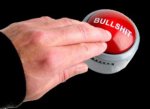What are you guys running with your 34 mm tubes?
Don't want aluminum. Has to be steel and top notch. Waiting for Gen II Razor to arrive...
Talley, Badger Ordnance, Warne, etc.???
Thanks.
Don't want aluminum. Has to be steel and top notch. Waiting for Gen II Razor to arrive...
Talley, Badger Ordnance, Warne, etc.???
Thanks.




